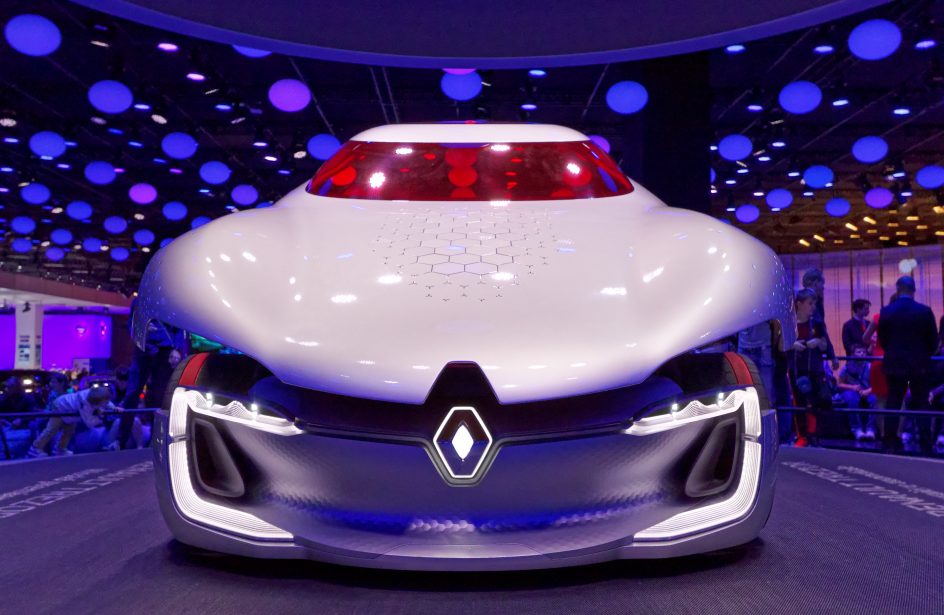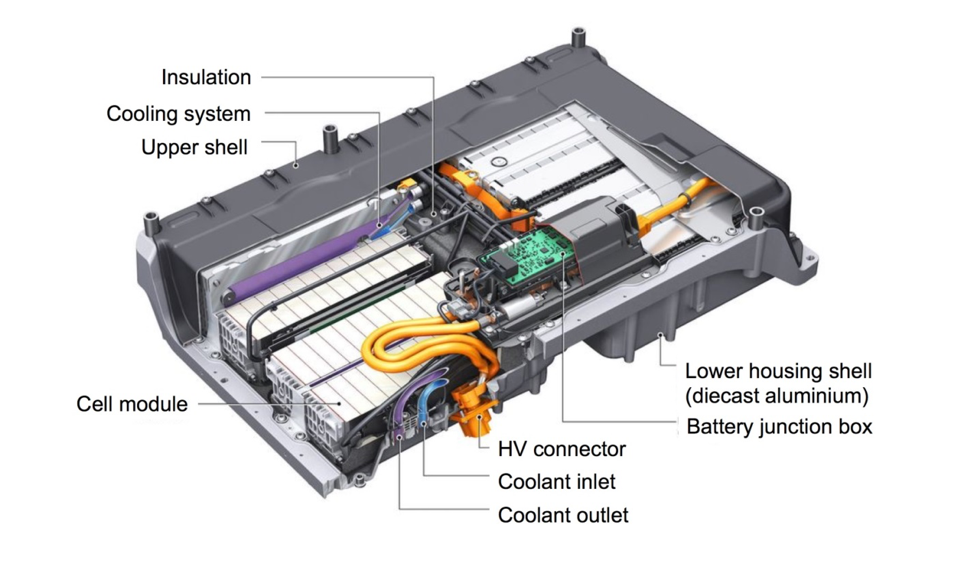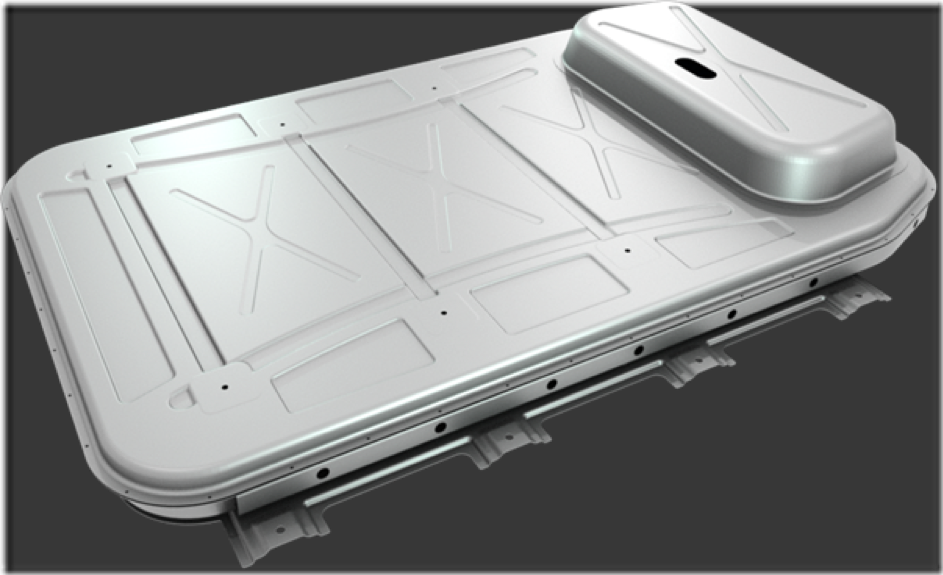Aluminium Extrusions Are Winning The Race For Battery Enclosure In EVs
Battery enclosures for electric vehicles (also called frames, housings or battery packs) have a pretty straightforward purpose: holding and protecting battery modules. Naturally, they come in various shapes and sizes, and can easily be adapted for the different particularities of battery modules.

Recently, some EV manufacturers have switched using steel to aluminum for battery housing design
Much like other car parts, battery enclosures are an arena for a number of materials tussling for prominence: aluminium, advanced high strength steel, carbon fibre, magnesium. While enclosures are currently made out of steel (or a combination of aluminium and steel), in the long run aluminium seems to have the upper hand, mostly thanks to its light weight and favourable technical characteristics. Automobile manufacturers expect that battery system costs, which now ac for between 30 and 50 % of the total cost of an electric car, will decrease in future.
WHAT PROPERTIES DO BATTERY ENCLOSURES NEED?
Thermal conductivity is of essential importance for battery enclosures. They must provide thermal transfer capabilities (like in a car’s braking system) to keep the battery cool or keep it warm in cold weather. Therefore, the structure actually becomes part of the power source. It can significantly affect the performance and life cycle of battery modules, since temperature variations module to module in a battery pack could result in reduced performance. At the same time, the material must have sufficient strength and impact resistance to protect battery modules damage, as well as other parts of a vehicle.

Battery enclosure structure
Hybrid electric vehicles (HEVs) charging/discharge profiles are generally more aggressive than those of battery EVs, which results in greater heat generation, so a thermal management system is required for HEVs. The thermal management system must be compact and lightweight, easily packaged in the vehicle, reliable, and low-cost.
Interconnecting cables can also add heat to the modules. To control the temperature of a battery pack in its optimum temperature range, heat may need to be rejected modules during hot weather and added during cold weather. Battery enclosure thermal management and control could be achieved by air or liquid systems, insulation, thermal storage (phase-change material), active or passive approaches, or a combination.
EXAMPLES OF DESIGNS AND TECHNIQUES OF BATTERY ENCLOSURES
Good battery enclosure designs using aluminium extrusions can simplify the assembly process and fixation of the individual battery modules. They also provide more energy absorption in case of a crash, compared with other materials and processes. Big enclosures can impact the whole architecture of the car body. In some models, battery enclosures are as big as the whole floor of the car between the wheels. This means they have to be integrated carefully in the car structure and need to interact with the body of a car.
All leading producers of aluminium products for automobile industry have developed their own battery enclosure assemblies with thermal management systems, including Constellium, Novelis or Hydro.
Constellium’s battery enclosures, for instance, are produced superior (high strength) aluminium alloys and engineered to resist crashes, intrusions while also cooling individual modules using innovative materials, design and joining technologies. For the bottom and top of the enclosures Constellium’s 3xxx,5xxx and 6xxx alloy sheet and aluminium are preferred due to their good thermal conductivity and corrosion resistance, as well as formability into a variety of shapes. When the entire enclosure is made of aluminium, it creates a natural electromagnetic shield that blocks interference with other electric or electronic components in the vehicle.
The enclosure structure produced by Constellium consists of extruded aluminium members that have a hollow cavity. The cavity is filled with a phase change material, a substance that will absorb and release thermal energy in the course of freezing or melting. It is a wax-like material that acts as a passive cooling system for a battery.
The properties of the phase change material (which can be engineered to the customer’s vehicle specifications) enable the material to hold heat or to “melt” like wax to carry heat away the battery. By shielding the battery temperature extremes, the body structure helps extend the battery’s life.

Good battery enclosure designs using aluminium extrusions can simplify the assembly process and fixation of the individual battery modules.
By contrast, Novelis uses its Advanz series aluminium sheet to produce the enclosure. This material provides the formability required for deep draws, but it also provides the protection required against road debris intrusion, stones and other potential impacts. This aluminium alloy has good fracture toughness and energy absorption characteristics, as well. This battery enclosure was designed to accommodate 90-kWh battery modules, which is the size used in an electric pickup or large SUV, though design is adaptable to fit different size batteries. By using sheet metal rather than extrusions or castings, Novelis is able to achieve better cost efficiencies.
Audi has also developed its battery enclosure system for Audi e-tron. The large high-voltage battery in the Audi e-tron can store up to 95 kWh of energy and is thus essential to the car’s long range. Together with the enclosure with its sophisticated crash structures, comprising 47 % extruded aluminium sections, 36 % aluminium sheet and 17 % die cast aluminium parts, the battery system weighs around 700 kilograms (1,543.2lb). It is bolted to the body structure of the Audi e-tron in 35 points. This increases its torsional rigidity by 27 % and contributes to the high level of the safety of the Audi e-tron, as does the cooling system bonded to the outside of the battery enclosure. Sophisticated measures have been taken to protect the high-voltage battery of the car. A strong enclosing frame of cast aluminum nodes and extruded sections, plus an aluminium plate 3.5 millimeters (0.1in) thick protect against damage stone impacts or curbs. Inside, a framework-like aluminium structure reinforces the battery system.
ALUMINIUM EXTRUSIONS IN THE LEAD

Projected global aluminum extrusion growth to 2026. By Geoff Scamans, Innoval Technology and Brunel University.
The above Bloomberg New Energy Finance estimates the aluminium extrusion tonnage was obtained by multiplying the number of projected electric vehicles by 80 kg of extrusions per vehicle. In this figure the quantity required for battery enclosures is included as well. Counting the Chinese market, by 2040, the aluminium extrusion tonnage required for electric vehicles could exceed 3 million tonnes.
The combined requirement for aluminium automotive body sheet and extrusions for electric vehicles will be almost 10 million tonnes by 2030 according to CRU. The ratio of this demand between sheet and extrusions is likely to be 80/20, which makes an extrusion demand of 2 million tonnes.
At the same time, a large number of new extrusion presses will have to be installed worldwide to meet rising demand. An extra challenge is that, in addition to further extrusion capacity, the required heat treatment and finishing capabilities will need to be installed in order to provide automotive aluminium extrusions with required quality and performance characteristics.
Recently, several EV producers switched steel to aluminium designs of battery enclosures, including Nissan (the Leaf), PSA, even VW, traditionally related to steel. Steel intensive Tesla Model 3 is using aluminium battery enclosures as well. The use of CFRP and glass fibre reinforced polymer (GFRP) in battery enclosures has been developed by Kia and GM for their electric models, including the Spark, Volt, and Bolt. The Chevrolet Bolt EV is the first GM electric vehicle to move to a skateboard design, with the battery enclosure made a thermoset vinyl hybrid resin with a woven glass reinforcement.
The competition in sustainable metals will continue between aluminium and steel, especially since the price difference between the two decreases when aluminium enclosures are made recycled aluminium. Extruded aluminium alloys are an optimal and sustainable choice for selection in battery enclosures, above all when suitably associated with vehicle structures.
Source: https://aluminiuminsider.com/aluminium-extrusions-are-winning-the-race-for-battery-enclosure-in-evs/


 Chia sẻ:
Chia sẻ: